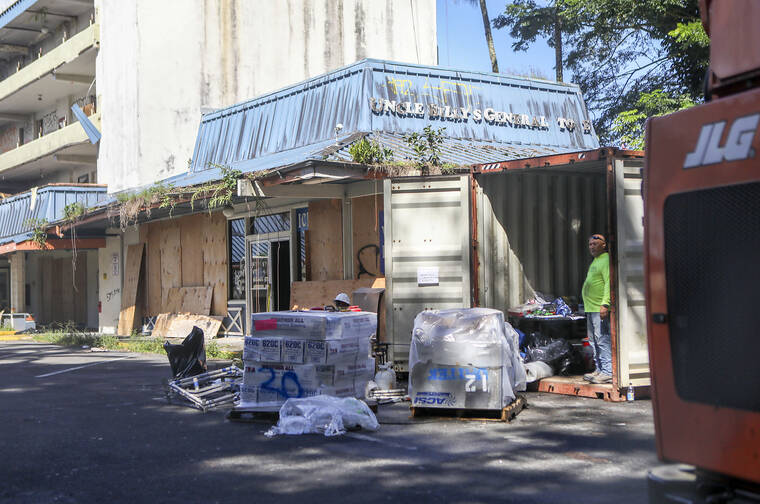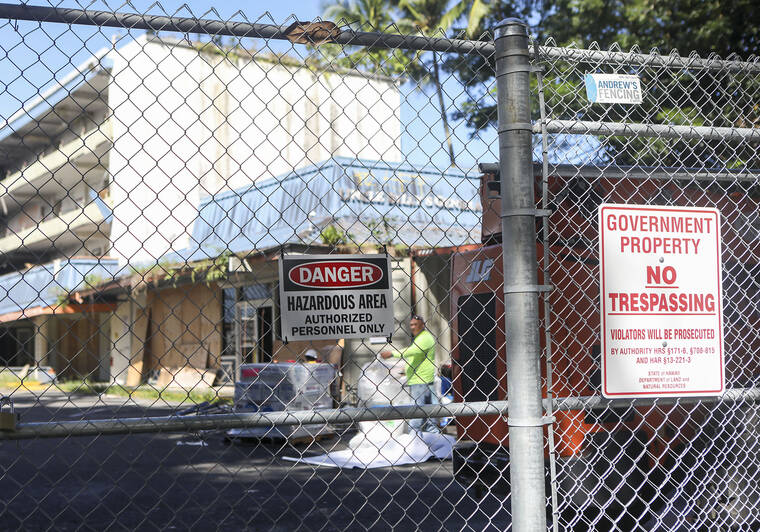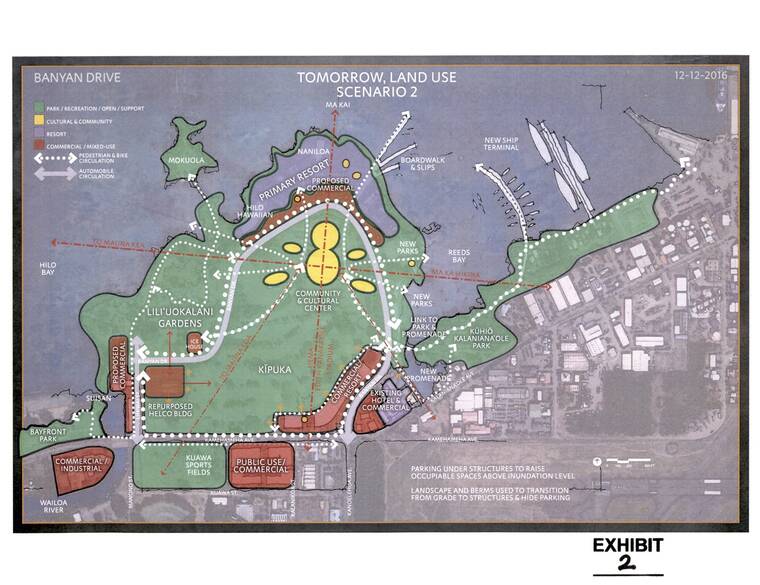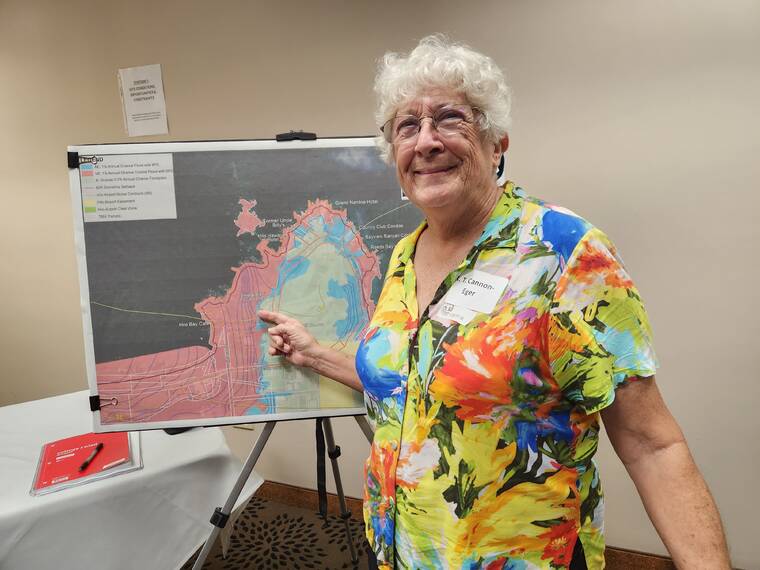Presentation about Waiakea Peninsula draws mostly criticism

Kelsey Walling/Tribune-Herald A worker with Unitek Contracting Group organizes materials Tuesday in front of Uncle Billy's Hilo Hotel.

Kelsey Walling/Tribune-Herald Signs warn against trespassing at the former Uncle Billy's Hilo Bay Hotel. Work to remove asbestos from the hotel site is underway.

A 2016 conceptual plan for the peninsula drafted by the Hawaii County Planning Department. This plan was favored by community members at the time above other, more development-heavy, plans.

K. T. Cannon-Eger points at a map of Waiakea Peninsula on Monday during a meeting at the Hilo Hawaiian Hotel.
Hilo is not Florida or New York or New Zealand, agreed Hilo residents during a meeting Monday night about the future of the Waiakea Peninsula.
Hilo is not Florida or New York or New Zealand, agreed Hilo residents during a meeting Monday night about the future of the Waiakea Peninsula.
The Hawaii Community Development Authority and Department of Land and Natural Resources hosted an open house at the Hilo Hawaiian Hotel to discuss and hear public feedback regarding how the Waiakea and Banyan Drive areas should be managed.
ADVERTISING
The meeting was part of a greater push by the state to develop a preliminary strategic assessment of the roughly 79 acres of DLNR land on the peninsula. With two major properties in the area fallen into disrepair — the former Uncle Billy’s Hilo Bay Hotel and the former Country Club Condominium Hotel — state and county authorities have agreed a more concrete management plan for the area is essential.
Ann Bouslog, director of land economics and real estate for consultant group PBR Hawaii and Associates, delivered a presentation about the area that brought up four other waterfront parks in cities around the world which she said could serve as inspiration for the peninsula. But attendees quickly made known their belief that those sites have nothing to offer Hilo.
The first two sites were both located in Florida — The Bay Park in Sarasota and The St. Pete Pier in St. Petersburg — and Bouslog highlighted that the two attractions revitalized their respective locations, were popular among locals, and were revenue-generators for their cities.
But the audience grew restless. “Hilo is not Florida!” shouted one attendee, while others criticized lawmakers for prioritizing development over Hawaiian rights.
Information about a third site, the Brooklyn Bridge Park in New York City, was even less well-received, with audience members laughing when the metropolitan park was revealed.
While the fourth site — a series of projects at Te Tairawhiti or Gisborne in New Zealand — was met somewhat more favorably, given its greater emphasis on indigenous and Maori culture, and reduced emphasis on development, the audience reacted with raucous laughter when Bouslog introduced the site by noting “Captain Cook landed here.”
Throughout the meeting, the audience was encouraged to engage with polls via the online platform Mentimeter, which allowed attendees to post aspects from each of the four example sites that could be applied to Waiakea, with responses appearing live on the meeting’s main projection. But as the meeting went on, those responses became primarily negative, with phrases such as “not Hawaii” or “‘a‘ole” dominating the screen.
Some audience members were nonplussed by the presentation. One attendee, K. T. Cannon-Eger, claimed the presentation made at least one significant factual error, incorrectly presenting a conceptual plan for the peninsula drafted by the Hawaii County Planning Department in 2016 as one that was favored at the time.
Cannon-Eger said that several conceptual plans were drafted in 2016, and the one most favored by the community at the time was a “Scenario 2” that was light on new development. But, she said, Bouslog’s slideshow displayed a more development-heavy plan, which Bouslog presented as the preferred proposal.
“I can’t say how they would make that mistake,” Cannon-Eger said after the presentation.
Cannon-Eger and other attendees said the meeting was not addressing a critical point, which one comment left on a whiteboard during the meeting summed up succinctly: “What Florida and Waiakea have in common is that they will both be underwater in 50 years.”
“Why are we even talking about anything other than abandonment?” said attendee Kristine Kubat. “We should be planning for taking everything down before the sea level rises.”
Indeed, part of the presentation included two different models of sea level rise, which predict the inundation of parts of Lili‘uokalani Gardens and other locations, as well as the total submersion of Coconut Island.
Kubat said further investment into any kind of development on the peninsula will be a waste of resources, and that the area should eventually be adapted toward aquaculture or fish ponds to improve Hilo’s self-sustainability.
“My hope is that global action will be taken so that this place will stay above water,” Cannon-Eger said. “You can’t build a cultural center if there isn’t a peninsula.”
Email Michael Brestovansky at mbrestovansky@hawaiitribune-herald.com.


